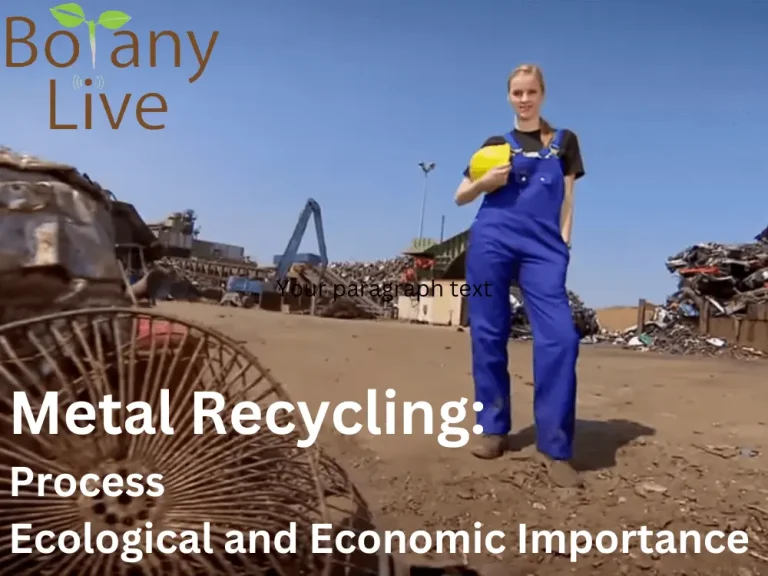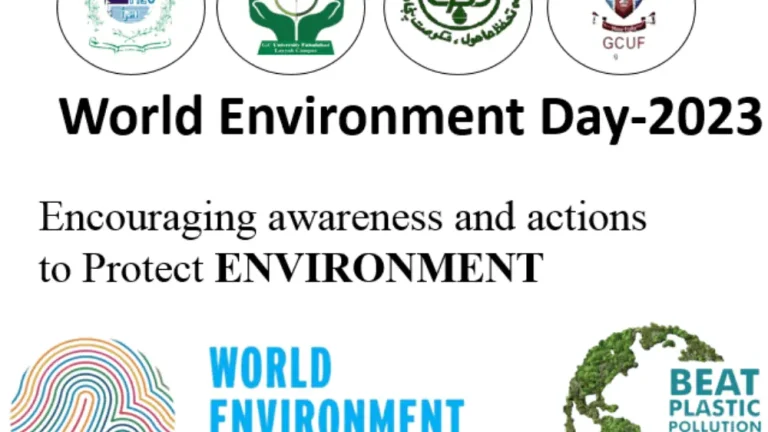Types of Pollution | Definition, Facts, and their Sustainable Solutions
What is Pollution?
In today’s world, pollution has become an ever-increasing concern that demands our immediate attention. It put at risk the delicate balance of ecosystems and the well-being of every living being on this planet. Understanding the various types of pollution is important to comprehending the extent of the problem and finding effective solutions to this global problem.
We can define pollution in a sentence as “Introduction of substances in the atmosphere those are harmful for living organisms”. This concern is related to land, water, and air (biosphere). In this article, we tried to explore the types of pollution, their detrimental effects and sustainable measures that can bring about this issue to an end.
What is Biological Pollution?
Biological agents become the cause of biological pollution. Animal hair, fur, pollens, spores, parts of insects and microbes or even whole body of microbes is the source of Biological Pollution.
What are Different Types of Pollution?
You can’t count these types in number, however, you can feel, face, and numerate these to infinity. They can be categorize on the basis of their physical state e.g. matter and energy. Soil pollution, water pollution, air pollution etc. comes under matter form of pollution. Energy form of pollution include radiation pollution, noise pollution, thermal pollution, and light pollution. Anyhow, there are almost 12 different types of pollution;
- Soil pollution
- Water pollution
- Air pollution
- Noise pollution
- Light pollution
- Radiation pollution and Nuclear Hazards
- Thermal pollution
- Information pollution
- Chemical Pollution
- Plastic Pollution
- Heavy metal Pollution
- Dust Pollution and Pollen Allergy
Here, we will discuss all these types.
1. Air Pollution
One of the most pressing forms of pollution is air pollution, which arises from a multiple sources such as vehicle emissions, industrial activities, and the burning of fossil fuels. This is one of the most common type of pollution everyone faces. The release of harmful pollutants (CO2, SOx, CH4) into the atmosphere not only degrades the air we breathe but also contributes to climate change, posing a significant threat to our planet’s future.
The pollutants those pollute the air in the atmosphere are further categorized into primary and secondary pollutants.
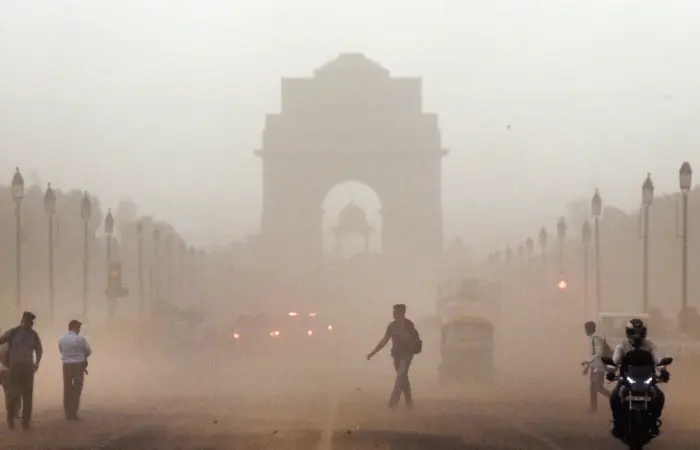
Primary pollutants are directly emitted into the environment, such as emissions from vehicles or smokestacks for example CO2, SO2, NOx. On the other hand, secondary pollutants are formed through chemical reactions involving primary pollutants and other chemicals. Smog and photochemical smog are the example of secondary pollutants. This pollutant (smog) forms when sunlight interacts with nitrogen oxides and volatile organic compounds. Understanding this distinction helps in identifying the sources and implementing targeted measures to reduce pollution levels effectively.
Carbon mono oxide and methane, produced by incomplete combustion in sources like cook-stoves and diesel engines, contribute to both climate change and local air pollution. The main sources of air pollution are burning (complete or incomplete) of fossil fuels, industry (including power generation and diesel engines), transport (fuel powered vehicles), agriculture (livestock and burning of waste), and waste burning in heaps and landfills.
Air pollution not only harms human health but also air pollution damages ecosystems, crops, and biodiversity. The burning of fossil fuels, such as coal and oil, is a significant contributor to air pollution and greenhouse gas emissions. Implementing strict emission standards, promoting renewable energy sources, and improving public transportation can help mitigate air pollution and its consequences.
Some Facts about Air pollution
Air is a mixture of gases with major parts including Nitrogen (78%), Oxygen (21%), and Carbon dioxide (0.03%). This mixture also include some fraction of Nobel gases. Air is not a gas, it is a mixture of air and particulate matter (PM). Following are some of the facts about air pollution;
- Air pollution kills nearly 800 people per hour, exceeding combined deaths caused by malaria, tuberculosis, and AIDS. Moreover, causes 3.8 million premature deaths annually, with the majority in developing countries, affecting women and children.
- More than 93% of children worldwide live in areas with air pollution exceeding WHO guidelines, resulting in more than a half million respiratory tract infection-related deaths in children under 15 in 2016. Moreover, it’s linked to low birth weight, obesity, and poor lung development in new born.
- Most of the cities in low- and middle-income countries don’t meet WHO air quality levels. Similarly, in high-income countries, 29% of cities fall short of WHO guidelines.
- Urban air pollution is due to traffic (25%), domestic fuel burning (20%), particulate matter (25%), and industrial activities (15%).
- Limiting global warming to “well below” 2 degrees Celsius (3.6F) as per the Paris Agreement by 2050 is only possible by reducing air pollution.
- Air pollution costs more than 4% of GDP for public health. In contrast, meeting the Paris Agreement targets would require investing approximately 1% of global GDP.
- Particulate matter (PM < 2.5 micro meter in size) and ground-level ozone are two major components of air pollution with detrimental effects on human health.
2. Water Pollution
It is another critical issue, occurs when contaminants find their way into our water bodies, disrupting the delicate aquatic ecosystems and threatening the availability of safe drinking water. It can be defined as “Introduction of pollutants from industrial effluents or domestic sewage and sludge into the water system that is harmful for human, animals, and plant.
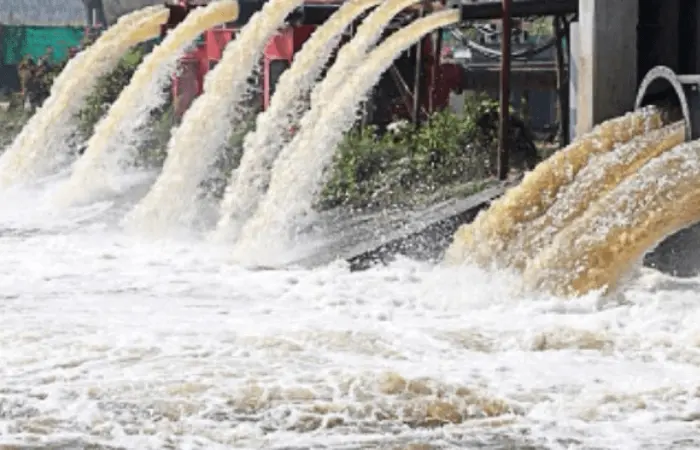
From industrial waste to agricultural runoff to domestic and plastic waste, a wide range of factors contribute to water pollution. This alarming situation necessitates immediate action to protect our precious water resources. Chemicals used in the agriculture as herbicide and pesticides are potential source of water pollution
3. Land Pollution
Soil, the foundation of life, is not immune to pollution either. Causes of land or Soil pollution are improper waste disposal, garbage deposition, plastic waste, kitchen waste, and other industrial activities. Contaminated soil not only affects agricultural productivity but can also lead to the bioaccumulation of harmful substances in plants and ultimately in our food chain.
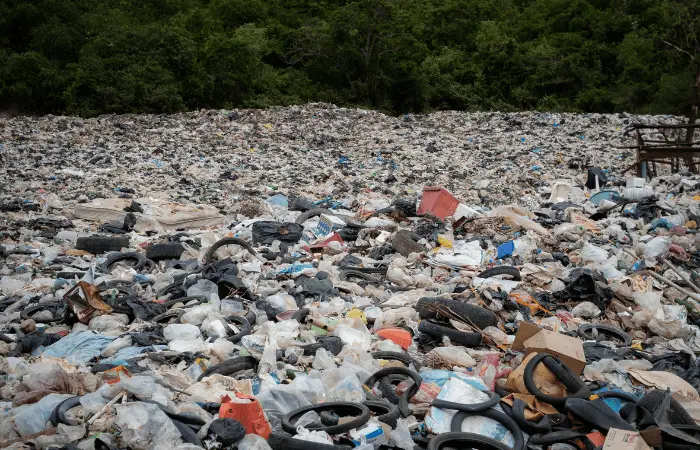
Land filled pollution when burned, produce black smoke, and it also results in air pollution. This shows that pollution is an integrated phenomenon where land pollution is linked to air pollution and in turn related to water pollution too.
Facts about land pollution
Following facts about the land pollution are astonishing and disturbing;
- More than 75% of the land area has already been degraded due to human activities like poor urban planning and bad infrastructure. This fraction may go up to 95% in couple of years.
- This land degradation has affected more than 3.5 billion people globally.
- Even in the European States (EU-27), there would be 5.2 tonnes of waste on an average per person
- The highest fraction of solid waste created each year is the kitchen waste. Only in the US, stats shows that about 65 million tonnes of food waste goes to the landfills.
- The problem of landfills and solid waste is global as out of 8 billion population of the world, half of the population is without any access to waste disposal system.
- Estrutural Landfill site, Brasilia (Brazil) there is the world largest solid waste dumping site. This site covers an area of about 136 hectare and is the house of solid waste since last 50 years.
- In US alone, there are almost 1270 such landfills. These landfills are the source of methane production, one of the major source (91%) of greenhouse effect and global warming.
- Out of these landfills, only 25% of the solid waste is recycled for energy generation and other purposes.
There are multiple ways of preventing soil pollution.
- Preventing waste dumping in open space
- Using waste land for aesthetic values
- Creating awareness
- Implementing 3-R strategy
4. Noise Pollution
Beyond the physical states, pollution exists in energy form too. One of the energy form of pollution is called sound or noise pollution. Noise pollution disrupts the peace of our surroundings and poses a threat to human health, contributing to stress, hypertension, headache, sleep disturbances, and cognitive performance disturbance.

5. Light Pollution
Similarly, light pollution not only obscures our view of the night sky but also disrupts the natural circadian rhythms and other rhythmic phenomenon of plants and animals. It also disturbs our sleep and the production of melatonin hormone that repairs our body cell during sleep.

Light pollution also effect the breeding cycle of fish. Fish prefer to lay egg in the breeding grounds near the bank of the river, ocean, or sea. When the fish see light, it retards back and thus breeding cycle is disrupted.
6. Radiation Pollution
Another significant form of pollution is radiation pollution, resulting from the release of radioactive materials into the environment. Sources of radiation pollution include nuclear power plants, radioactive waste disposal, and accidents involving radioactive substances. Exposure to high levels of radiation can have severe health consequences and pose long-term risks to ecosystems.
Incidents of Hiroshima and Nagasaki in 1945 were the biggest disasters of radiation pollution in the history of mankind. Chornobyl incident was another disastrous incident causing death of hundreds of people.
7. Thermal Pollution
Thermal pollution is yet another detrimental consequence of human activities. Industries and power plants use water as a coolant. This water helps to cool down the temperature of boilers. Thermal Pollution occurs when there is a significant increase or decrease in water temperature due to industrial processes or the discharge of hot water from power plants.
This sudden change in temperature can disrupt aquatic ecosystems. This increases BOD of water and lower the dissolve oxygen (DO) content of water. These both processes negatively impacting fish populations, and biodiversity of water bodies.
Proposed solutions to thermal pollution lie in pre-treating of the waste hot water before dumping it into the water bodies. This can be done by storing hot water into storage tanks. Evaporation losses help in lowering the temperature of water. High speed flow of water and sprinkler can also help in decreasing the damaging effects of hot water.
Facts about Thermal Pollution
- Lightening is the source of Thermal Pollution that hit the atmosphere 8 million times per day and raise the temperature up to more than 50,000°F.
- Coal plants use 180 billion gallons of water as a coolant per year and this much amount of water enters the water bodies.
- Only 1°C rise in temperature can affect metabolic process of the fish and other aquatic organisms. This significant change affect breeding and food chain.
- Old power plants in US only can consume up to 100 trillion gallons of water (US Environmental Protection Agency).
8. Chemical pollution
This issue arises from the release of toxic substances into the environment. Industrial activities, improper disposal of hazardous waste, and the use of harmful chemicals in agriculture contribute to chemical pollution. These pollutants can accumulate in the environment, posing risks to human health and ecosystems.
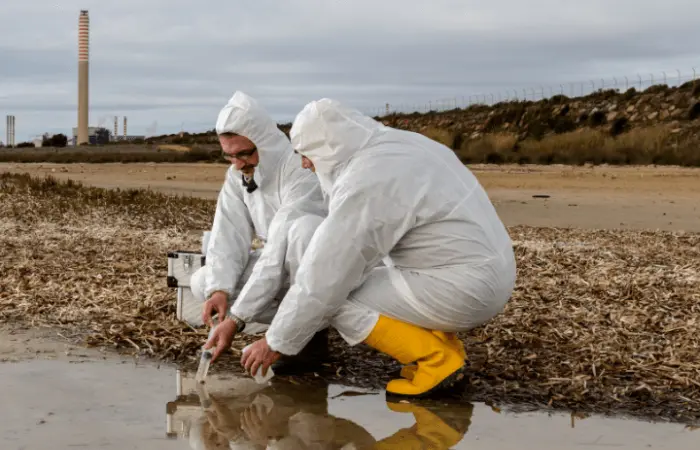
Chemical fertilizers add pollution to the soil. This is harmful for soil fauna and microbes. The problem becomes more severe when these chemicals washed away by the flood and cause Eutrophication. Eutrophication is the enrichment of water bodies with nutrient causing abrupt change in algal growth.
Fungicides and herbicides are also a form of chemical pollution. They may remain in the soil and plant body for longer time in the shape of residues. These residues may enter in the food chain of plants and animals.
9. Information Pollution
In this digital era, we are facing a new form of pollution, “information pollution”. There is a vast amount of information available online on the search engines, the dissemination of misinformation, fake news, and online scams has become increasingly prevalent today. Information pollution not only affects our decision-making but also undermines trust and credibility.
There is strong need to abide by the rules, law, ethics, moral values, and the respect of others. It is our core duty to disseminate correct information to the community. We can do this by research and deep knowledge of the subject under consideration.
Solutions to the Different types of Pollution
To tackle the multifaceted issue of pollution, it is essential to adopt sustainable solutions. These solutions range from transitioning from fossil to renewable energy sources, and implementing regulations to a stricter level to limit the emission of harmful gasses. There is a need to create awareness regarding reduce, reuse, recycle, and refuse policy. We need to promote energy-efficient practices to reducing single-use plastics, improving waste management systems, and fostering environmental education and awareness.
It is crucial to understand that addressing pollution requires collective efforts from individuals, communities, industries, and policymakers. Together, we can achieve the goal of sustainable world. We need to create a cleaner and healthier future on the earth for ourselves and for our coming forth generations.
Addressing these complicated issue of pollution requires a multi-dimensional approach. Additionally, the concept of bioremediation of pesticides offers a promising solution by utilizing natural organisms or their byproducts to break down and remove harmful pesticides from contaminated soil and water. Bioremediation might be a phytoremediation where microbes are used to control pollution.
To combat pollution effectively, it is crucial to raise awareness and encourage individual and collective action. This can be achieved through educational campaigns, community engagement, and the promotion of sustainable lifestyles. By reducing waste generation, conserving resources, and advocating for responsible consumption, we can all contribute to minimizing pollution and preserving our planet.
Furthermore, the bioremediation of pesticides offers a sustainable solution for reducing the harmful effects of pesticide contamination. By utilizing natural organisms or their byproducts, such as bacteria and fungi, to break down and remove pesticides from soil and water, we can restore environmental balance and protect human health.
FAQs
I’m Dr Qaiser Maqsood (PhD), a dedicated researcher and expert in Biological Sciences, Gardening, Bio-Diversity, Ecology, and Environmental Sciences. I’m much concerned about Environmental Pollution, Climate Change, Plantation, Gardening, and Global Warming. My passion is to explore innovative solutions in all these fields.
Be aware that we have ONLY ONE EARTH. Protect it!!

